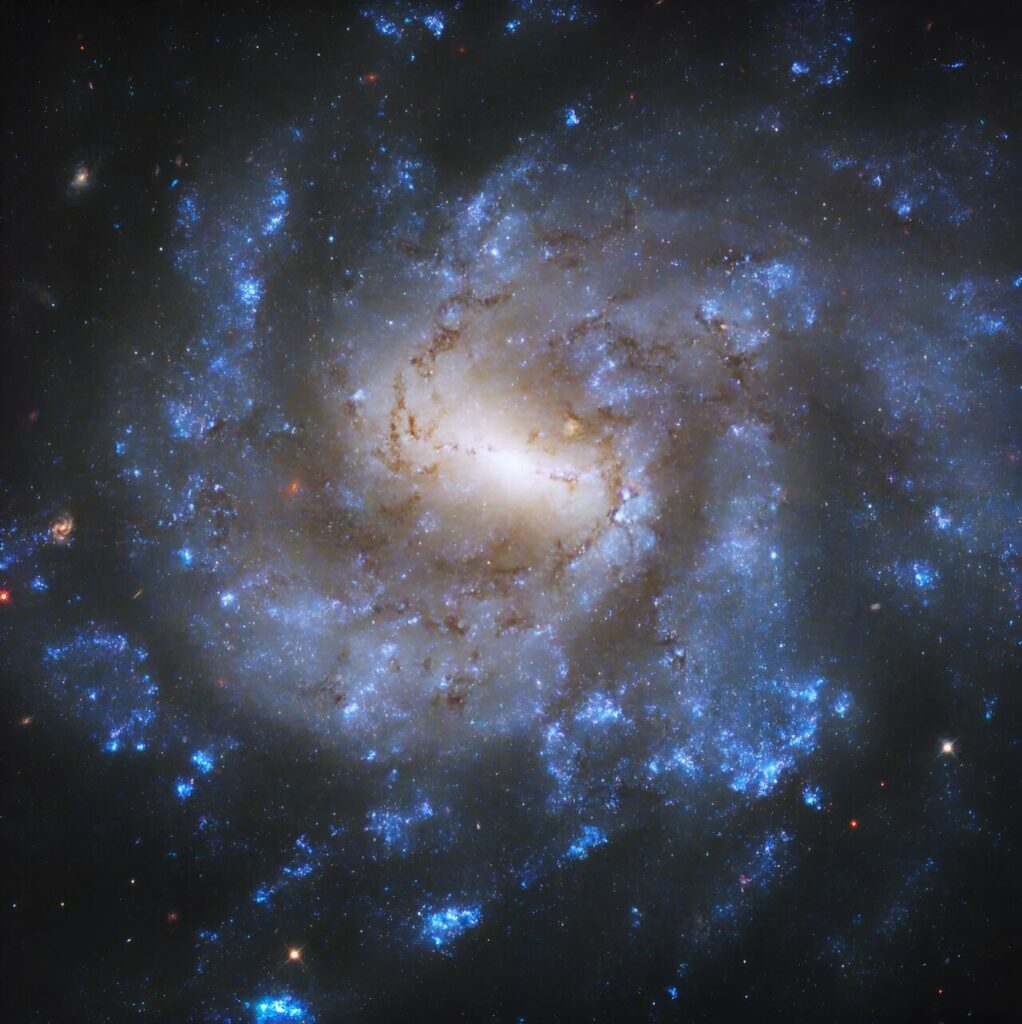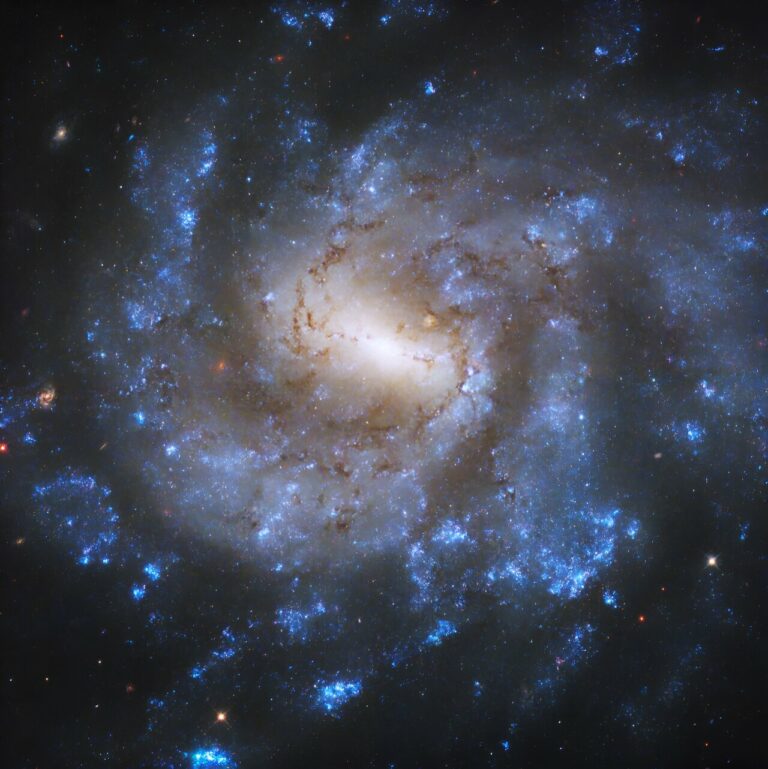Hubble Captures NGC 685, a Barred Spiral Galaxy
NGC 685 commands attention amidst faintly shimmering stars against a pitch-black backdrop. This galaxy is unmistakably a barred spiral galaxy, boasting a luminous central bar and irregular, curving arms. Situated approximately 58 million light-years away in the constellation Eridanus, NGC 685 resides south of the celestial equator and becomes visible from the southern hemisphere during specific periods of the year.

In 1834, the esteemed British astronomer John Herschel discovered NGC 685, and early observers remarked upon its apparent circular shape. Spanning about 60,000 light-years in diameter, this entire galaxy is slightly over half the size of our own Milky Way. The clusters of vibrant blue adorning the galaxy’s arms represent star clusters, where groups of stars are held together by their mutual gravitational pull. The dark red wisps near the central bar depict interstellar gas and dust, the building blocks of star formation. It is worth noting that approximately two-thirds of all spiral galaxies possess a central bar similar to NGC 685. The galaxy’s intense radiance emanates from the concentration of numerous stars within a relatively compact region.
NASA’s Hubble Space Telescope captured this image as part of a scientific endeavor to investigate the formation and evolution of star clusters. Hubble’s ultraviolet capabilities are particularly well-suited for this task, as young stars emit a brilliant glow at ultraviolet wavelengths. An average-sized galaxy like NGC 685 can harbor around 100 million stars, which falls on the lower end of the spectrum.
This article is republished from PhysORG under a Creative Commons license. Read the original article.
Do not forget to share your opinion with us to provide you with the best posts !




0 Comments